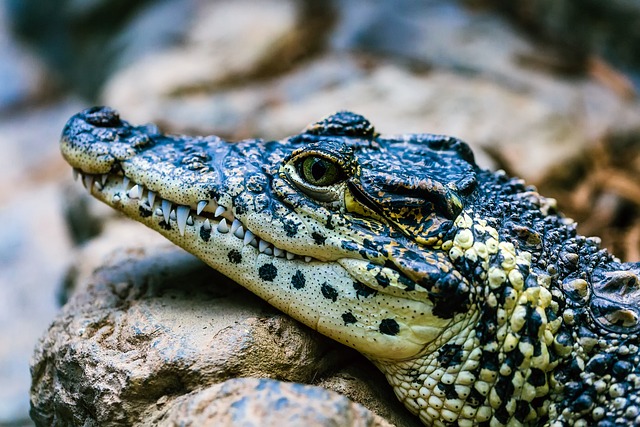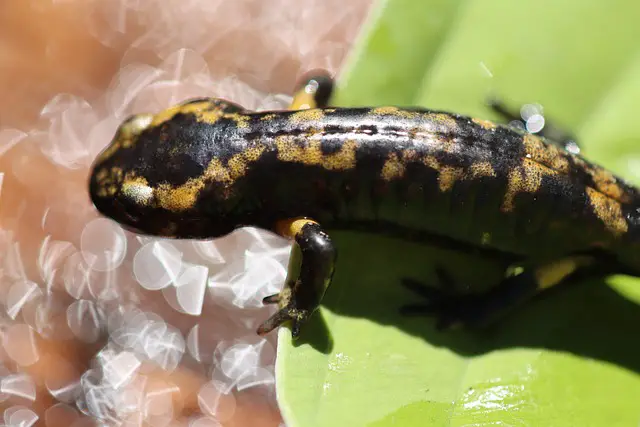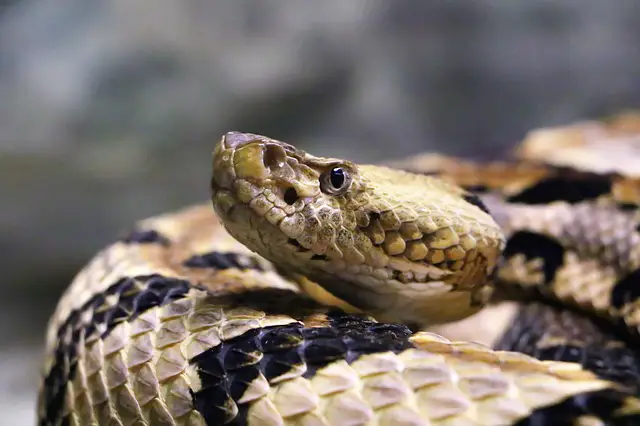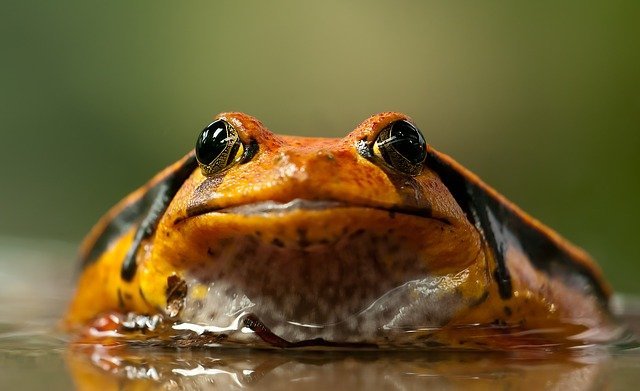Black caimans are one of the largest predators found in South America, known for their aggressive nature and powerful jaws. These reptiles are commonly found in freshwater habitats, such as rivers and lakes, where they hunt for prey.
But are black caimans considered apex predators in their ecosystems?
Apex predators are those at the top of the food chain, without any natural predators. They play a critical role in their ecosystems, regulating the population of other species and maintaining the balance of the food chain.
While black caimans are formidable predators, there is some debate about whether they are true apex predators.
Studies have shown that black caimans can take down a variety of prey, including fish, birds, and mammals.
However, they also face competition from other predators, such as jaguars and anacondas, who can prey on caimans or the same prey species.
As such, the status of black caimans as apex predators is not entirely clear-cut and may depend on the specific ecosystem in which they are found.
Understanding Apex Predators
An apex predator is a species at the top of the food chain in its ecosystem. These predators have no natural predators and play a vital role in maintaining the balance of their ecosystem. Apex predators are often large, powerful, and highly skilled hunters.
Black caimans are considered apex predators in their habitat. They are the largest predator in their ecosystem and have no natural predators.
Black caimans are skilled hunters and can take down a variety of prey, including fish, birds, and mammals.
Being an apex predator comes with certain responsibilities. Apex predators significantly impact their ecosystem, and any changes in their population can have far-reaching effects.
For example, if the population of black caimans were to decline, it could lead to an increase in the population of their prey, which could lead to a decline in the population of other species in the ecosystem.
It is important to understand the role of apex predators in their ecosystem and to take steps to protect them. By protecting these predators, we can help ensure the health and stability of their ecosystem.
Black Caiman: An Overview
Black caimans are large, carnivorous reptiles native to Central and South America. They are a crocodilian species and are closely related to alligators and other caimans. Black caimans are apex predators, which means they are at the top of the food chain in their respective ecosystems.
Adult black caimans can reach lengths of up to 13 feet and weigh over 800 pounds. They are covered in tough, scaly skin that protects against predators and other threats. Their powerful jaws are lined with sharp teeth, which they use to catch and kill their prey.
Black caimans are found in various habitats, including rivers, lakes, and swamps. They are known for their ability to adapt to different environments and survive in fresh and saltwater habitats.
Despite their size and strength, black caimans are not aggressive towards humans and typically only attack when provoked or threatened. However, it is important always to exercise caution when in their presence, as they are still powerful predators with the potential to cause serious harm.
Overall, black caimans are fascinating creatures that play an important role in their ecosystems as apex predators.
Their impressive size and strength make them a formidable force in the animal kingdom, and their ability to adapt to different environments ensures their continued survival in the wild.
Habitat and Geographic Distribution
Black caimans are apex predators that inhabit freshwater ecosystems in South America. They are found in various habitats, including rivers, streams, swamps, and lakes.
Black caimans prefer slow-moving water with dense vegetation, such as flooded forests and marshes. They also inhabit open water bodies, such as oxbow lakes and lagoons.
The geographic distribution of black caimans is limited to South America, where they are found in the Amazon Basin, Orinoco Basin, and other river systems. They are most abundant in Brazil, Peru, and Colombia. Black caimans have also been reported in Venezuela, Guyana, Suriname, French Guiana, Ecuador, and Bolivia.
Black caimans are well adapted to their aquatic environment, with physical features such as webbed feet, a streamlined body, and a powerful tail that helps them swim efficiently. They can also hold their breath for long periods, allowing them to stay underwater and ambush prey.
Overall, black caimans are an important predator in South American freshwater ecosystems, and their distribution and habitat preferences are closely tied to the availability of suitable aquatic habitats.
Diet and Hunting Strategies
Feeding Habits
Black caimans are carnivores and apex predators, meaning they are at the top of the food chain in their ecosystem. Their diverse diet includes fish, birds, reptiles, and mammals.
Most of their diet consists of fish, which they catch by lying in wait beneath the water’s surface and then lunging out to grab their prey with their powerful jaws.
They also hunt for birds and small mammals that come to the water’s edge to drink.
Hunting Techniques
Black caimans are skilled hunters and have developed several prey-catching techniques. They use their excellent eyesight and sense of smell to locate potential prey, and then they use their stealth and patience to get close enough to attack.
When hunting fish, they often use a technique called “sit-and-wait.” They remain motionless in the water, waiting for a fish to swim by, and then they lunge out and grab it with their powerful jaws.
When hunting for larger prey, such as birds or mammals, black caimans use their powerful jaws to grab and hold their prey. They will then drag their prey into the water, where they will drown it before consuming it
. Black caimans are also known to hunt in groups, particularly during breeding, when they may work together to catch larger prey.
Overall, black caimans are highly effective predators, with a diverse diet and a range of hunting techniques that allow them to thrive in their environment.
Role in the Ecosystem
Black caimans are apex predators that play an essential role in the ecosystem of their habitat. They have a significant impact on prey populations and influence the biodiversity of their environment.
Impact on Prey Populations
Due to their size and strength, black caimans, such as capybaras, deer, and even jaguars, can take down large prey. This makes them an essential regulator of prey populations in their habitat. By controlling the number of prey animals, black caimans help maintain a healthy ecosystem balance.
Influence on Biodiversity
Black caimans are also important for maintaining biodiversity in their habitat. As apex predators, they help control other predators’ populations and prevent them from becoming too dominant. This allows for a greater variety of species to coexist in the ecosystem.
Furthermore, black caimans are an essential part of the biodiversity of their habitat. They are a unique and fascinating species that attracts tourists and researchers worldwide. Their presence in the ecosystem is a testament to the diversity and complexity of the natural world.
In conclusion, black caimans are apex predators that play a vital role in the ecosystem of their habitat. They have a significant impact on prey populations and influence the biodiversity of their environment.
Threats and Conservation
Human Impact
The black caiman is threatened by human activities such as hunting and habitat loss. The species is hunted for its skin, which is highly valued in the leather trade.
Black caimans are also hunted for their meat and other body parts used in traditional medicine. The destruction of wetland habitats, where black caimans live, is another major threat to the species.
Conservation Efforts
Conservation efforts for the black caiman involve a combination of habitat protection and regulation of hunting. In some areas, hunting of the species is illegal, and in others, it is regulated to ensure that populations are not overexploited.
Wetland conservation efforts are also crucial for the species, as they provide critical habitat for black caimans and other aquatic species.
There are also efforts to educate local communities about the importance of protecting the black caiman and its habitat.
This includes outreach programs that emphasize the ecological and economic value of the species. In addition, some organizations are working to establish captive breeding programs for black caimans, which could help to supplement wild populations and reduce pressure on them.
Overall, the black caiman is considered a vulnerable species, and conservation efforts are critical to ensure its survival. Protecting its habitat and regulating hunting can help ensure that this apex predator continues to thrive in the wild.









